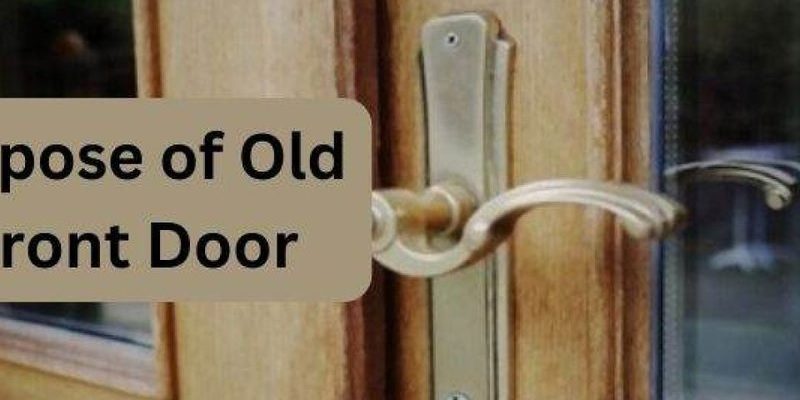
Old door hardware includes things like hinges, knobs, deadbolts, and locks. When these items break or simply get outdated, tossing them aside isn’t just a missed opportunity to tidy up; it also means they might end up in a landfill, which isn’t great for our planet. So, let’s dive into the world of door hardware disposal and learn how to manage it responsibly.
Why Responsible Disposal Matters
You might be wondering why you should care about how you dispose of your old door hardware. Here’s the thing: improper disposal can lead to environmental issues. Many metals and plastics take years, if not centuries, to decompose. By choosing responsible disposal methods, you help reduce waste and protect our planet.
Furthermore, some door hardware can contain materials that are harmful if not disposed of correctly. For instance, old locks often contain metals that can leach into the soil and water supply if they’re dumped carelessly. Responsible disposal means keeping these materials out of landfills and ensuring they’re recycled or disposed of properly.
Besides environmental factors, think about safety. Keeping broken or outdated hardware around can pose a risk—sharp edges, broken pieces, or malfunctioning locks can be dangerous. Disposing of these items safely not only clears your space but also helps eliminate potential hazards in your home.
How to Identify Broken or Outdated Hardware
Before we get into disposal methods, let’s talk about how to identify what needs to go. Broken hardware often shows clear signs of damage. For example, if a doorknob won’t turn or a deadbolt is sticking, it might be time for a replacement.
Another aspect to consider is the age of your hardware. If you’ve moved into a new home and inherited outdated fixtures, they might not only look dated but could also lack modern safety features. Checking for wear and tear can often reveal whether hardware is still functional or should be replaced.
When evaluating your hardware, consider these questions:
- Does it function properly?
- Is it visually appealing?
- Does it offer the necessary security for your home?
If the answer to any of these is “no,” you might want to consider disposal.
Best Practices for Disposing of Door Hardware
Now that you know what to discard, let’s discuss how to dispose of it properly. First and foremost, recycling is often the best option. Many local recycling programs accept metals, which means your old doorknobs and locks can be transformed into new products.
To recycle, start by removing any non-metal parts, like plastic covers or wood components, since these may not be recyclable. Check with your local recycling center for guidelines, as they can vary by location.
If recycling isn’t an option, consider using options like donation. Many shelters or organizations are often willing to accept hardware donations, especially if they’re still functional. This is a great way to give your items a second life while helping someone in need.
How to Dispose of Specific Types of Hardware
Different types of door hardware require different disposal methods. Here’s a quick breakdown of how to handle a few common types:
Door Knobs and Handles
If they’re made of metal, these can usually be recycled. Just remember to remove any plastic parts first. If they’re still in good condition, you could also consider selling them online or donating them.
Hinges
Metal hinges are generally recyclable. Check with your local center for metal recycling guidelines. However, if they’re rusted or broken, it’s best to dispose of them in the regular trash, ensuring they are wrapped to prevent sharp edges from injuring anyone.
Locks and Deadbolts
These are often trickier. Many locks contain a mix of materials, so check if your recycling center accepts them. If they’re no longer functional, you might need to discard them in the trash. Just be sure to remove any batteries if they’re part of a smart lock.
Exploring Eco-Friendly Alternatives
If you’re thinking about updating your door hardware, consider eco-friendly alternatives as you replace the old. Look for products made from sustainable materials or those that have a good recycling return. Some brands specialize in eco-friendly door hardware that’s made from recycled materials or is designed for longevity.
Additionally, opting for products that are easy to recycle at the end of their life can make disposal easier down the line. This way, you’re not just creating less waste now but also setting yourself up for trouble-free disposal in the future.
Local Disposal Programs and Resources
Many communities have specific disposal programs aimed at reducing waste. It’s worth researching your local area for options. Some towns offer free recycling days or special events focused on e-waste and metal recycling.
You might also find local charities or organizations that will accept building materials, including door hardware. Websites like Freecycle or local Facebook groups can be a good way to connect with others who might need your old hardware.
Check with your local waste management department for information on specific programs available in your area. They can guide you on how to dispose of various items properly.
Final Thoughts on Door Hardware Disposal
Disposing of old or broken door hardware might seem like a small task, but it plays a significant role in maintaining a safe and eco-friendly home. Responsible disposal helps protect our environment and keeps your living space clutter-free.
By understanding how to identify items for disposal and exploring good practices, you can make a positive impact. Remember, every little bit helps when it comes to creating a cleaner, greener world. Next time you encounter broken door hardware, you’ll know just how to handle it—clearly, simply, and responsibly.
